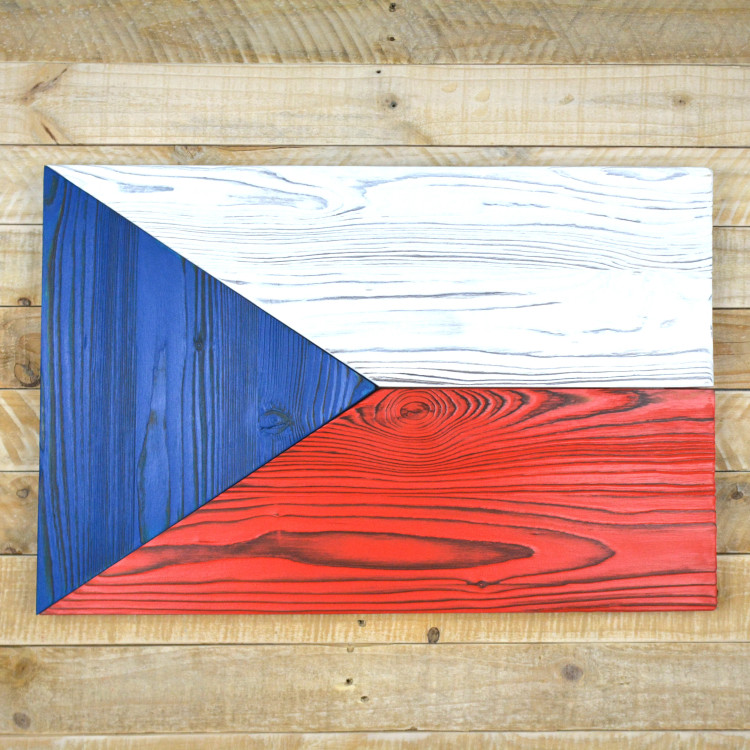








The handmade wooden flag of the Czech Republic uses the Shou Sugi Ban technique for a deep tan and is then brushed, giving each piece a unique look and wood grain. We offer a choice between old wood with distinctive signs of use and new material for a clean look. Each flag is then hand-painted, which enhances its authenticity and adds a unique dimension. These flags not only reflect national pride, but also bring a bit of nature and artistry to your space.
Every piece is original
Health-save and durable coating
Small family business
Data sheet
Specific References

From every czech product sold we donate 7% to the Wolf Poppies Society.
(Wolf Poppies Society)
We are helping the WAR VETERANS who have proudly carried our national flag on their shoulders and put their health and lives on the line for our safety, enduring separation from their families and the stress of combat.
We are a small non-profit that accumulates not money, but volunteer hours. And we have the strength to help even those soldiers who have not been deployed. We don't turn away police officers, firefighters, customs officers, and prison guards, whose deployments and problems tend to be similar.
Thank you for your service!
16 other products in the same category: